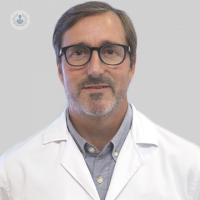Extraction of earwax
Written by:
What is wax?
Wax is a natural secretion that is formed in the outer part of the auditory canal and in which the skin that is desquamated from the canal accumulates together with the secretion of some glands. This wax has defense properties to prevent infection of the skin of the ear canal and its amount of secretion depends on the time of year, genetic factors and even age.
How and why are wax plugs formed?
Wax plugs are formed by an excess production of cerumen that can be due to the scratching of the ear or the use of lacquers, gels or even cotton swabs that help to compact and impact the cerumen towards the inside of the ear. auditory canal.
What symptoms do they give?
Earplugs can cause ear discomfort, clogging or even sometimes hearing loss, ringing in the ears or also sensation of instability.
What is its extraction?
For the removal of earwax plugs, solvent droplets are often used to soften the earwax before removal.. The most common method for cleaning the ear is a wash with warm, disinfected water, with which a pressure is exerted that pushes the cerumen out to clean the ear canal.. There are other methods for the extraction of the wax, such as the application of a blunt hook, avoiding the injury of the skin of the auditory canal that allows to extract the driest and hardest plugs, and also the use of aspirators that with microscopic vision allow to clean the cerumen more liquid or the remains of water that may remain after washing. Occasionally, a few antibiotic drops are also administered to prevent infection of the skin after removal of the earwax.



